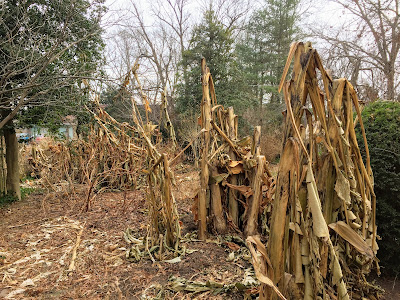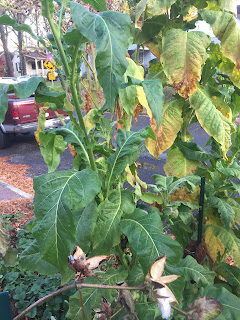There's a house along Lake Drive in Princeton that has a special garden. Soon, the house and garden will be bulldozed and replaced, if history is guide, with sterile lawn and generic house, as the destructive side of prosperity has its way with the landscape. It was an estate sale, and before it changed hands I was invited to help myself to whatever was left in the house's garage and yard.
One of the more surprising finds was a grove of banana palms 10-15 feet high. Each year its loving owner would cut the palms down to the ground and mulch the roots heavily with leaves to protect them from the winter weather. And each spring the banana palms would rise to cast a tropical spell on her garden.We thought it would be great to dig one up and transplant it to the Barden at Herrontown Woods, but the massive root structures looked intimidating.
Not surprisingly, by January, they looked like this. Not being familiar with growing bananas in Princeton, I have no idea if the unprotected roots will survive the freezing weather.
It clearly likes the big southwest-facing windows. While we shiver, it blooms,
and bears perfectly usable limes. They usually get a handful of fruit, but last year got 40.
Another longterm visitor from another climate is a lime tree that has taken over much of the front office at Tamasi's Shell station on 206.
and bears perfectly usable limes. They usually get a handful of fruit, but last year got 40.

















